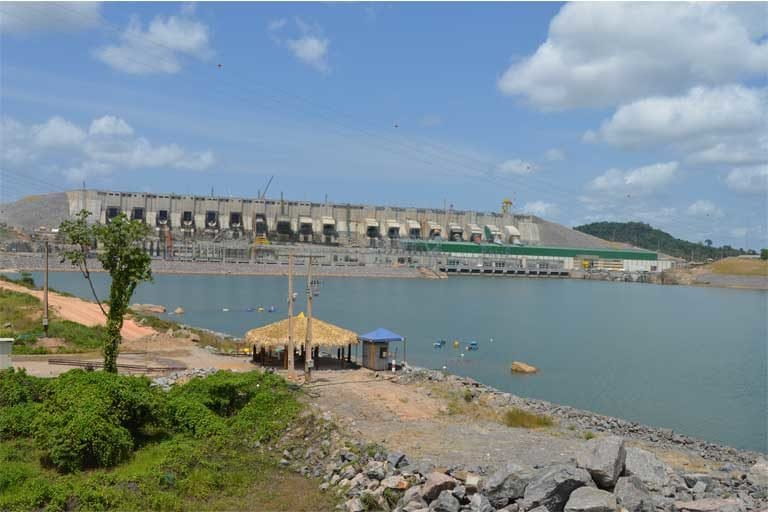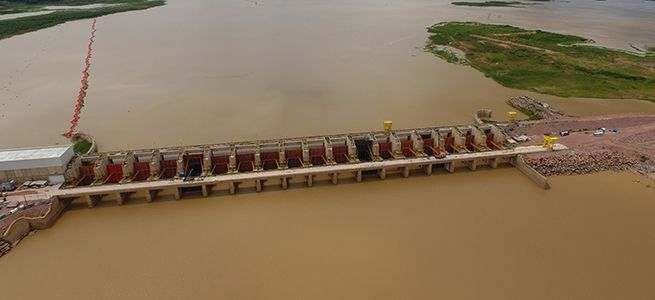- As thousands of hydroelectric dams are planned worldwide, including 147 in the Amazon, a new study finds that the true socio-environmental and cultural costs of dams are rarely evaluated before construction. Were such factors counted into the lifetime cost of the dams, many would not be built.
- Dam repairs and removal at the end of a project’s life are rarely figured into upfront costs. Nor are impacts on river flow reduction, loss of fisheries, and aquatic habitat connectivity, destruction of productive farmlands drowned by reservoirs, and the displacement of riverine peoples.
- Lack of transparency and corruption between government and dam construction companies is at the heart of the problem preventing change. Researchers recommend that environmental impact assessments (EIAs) and social impact assessments (SIAs) be granted enough weight so that if they turn out negatively it will prevent a bad dam from being built.
- EIAs and SIAs should be done by third parties serving citizens, not the dam company. Better governance surrounding dams needs to be organized and implemented. There needs to be increased transparency about the true financial, social, cultural and environmental costs of dams to the public. Maintaining river flows and fish migrations is also critical.
An estimated 3,700 dams are either planned or under construction in developing countries around the world — including 147 slated for the Amazon basin region. At face value, dams seem like a good deal environmentally and socially. Invest heavily upfront and then tap into an ever-flowing, renewable power source.
However, in a review paper, recently published in Proceedings of the National Academy of Sciences of the United States of America (PNAS), researchers argue that the true costs of hydropower projects are often underestimated, with harmful financial, social, and environmental consequences resulting in a wellspring of hidden costs.
Worldwide, approximately 472 million people have been negatively affected by dam construction over the last century. Downstream, river-dependent communities may be displaced, be deprived of their food security and livelihoods, and suffer immeasurable cultural losses. Almost immediately after installation of the Tucuruí Dam in the Brazilian Amazon, for example, fish catch declined by 60 percent, while 100,000 downstream residents were impacted due to lost fisheries, flooded agricultural lands, or the loss of other resources.
The PNAS review paper, produced by researchers at Michigan State University, investigates the socioeconomic and environmental impacts surrounding dams in several major river basins and makes recommendations for moving towards sustainable and responsible hydropower development in the 21stcentury.
Planning for the end
In North America and Europe, more dams are being torn down than constructed. In the U.S. alone, over 60 dams per year have been removed since 2006. Repairing a small dam can be more than three times more expensive than removing it, which is one of the reasons we are seeing a trend in dam removals.
“The cost of removing a dam once it’s useful life is over is extremely high and should be taken into account when computing the total cost of a new hydro development. If the cost of removal had to be included, many dams wouldn’t be built,” said Emilio Moran, study lead author and principal investigator of research project supported by the São Paulo Research Foundation that was designed to study the socio-environmental consequences of the highly controversial Belo Monte hydropower mega-dam in the Brazilian Amazon.
The lifespan of a dam is limited. Those currently being built in Brazil, for instance, are intended to last just 30 years. This may be extended by upgrades, but eventually, aging construction materials and sediment accumulation will cause a dam to deteriorate, stop functioning at a level that is economically viable to maintain, or — in worst case scenarios — to fail.
A failed dam can result in tremendous loss of life and property. In 1976, the Teton Dam in Idaho, USA failed, resulting in eleven deaths and over $2 billion in damages. In 2018, 40 people were killed and 6,000 displaced by the collapse of the Xe-Pian Xe-Namnoy hydroelectric dam in the Mekong Valley of Laos, and though hundreds of people remain missing after that disaster, the construction of two large Mekong River dams is surging ahead as planned.

Accounting for environmental harm
Development, deforestation, and climate change can, and do, greatly influence a dam’s costs, productivity, and lifespan. Construction and deforestation increase the amount of sediment deposited into a river by orders of magnitude, shortening the life of a dam or requiring expensive intervention measures such as dredging.
Also, up to half of the rain in the Amazon biome is created by means of internal moisture recycling (the forest making its own rain). Significant increases in deforestation disrupt the water cycle, decreasing precipitation and water availability to rivers. In addition, the decreases in river flow due to worsening drought can greatly reduce the amount of power generated by a dam, causing it to fall below original energy estimates — decreasing dam productivity and profits.
Overall, the Amazon Basin is getting drier, decreasing the reliable water flow for its dams. As a result, climate change coupled with deforestation has helped cause the Belo Monte dam (completed in 2016) to produce, even in best case scenarios, only 4.46 of the 11.23 GW it was forecast to generate. The Jirau and Santo Antonio dams, also in the Amazon, are likewise projected to produce only a fraction of their originally projected 3 gigawatt (GW) capacities.
At the famed Hoover Dam on the Colorado River in the U.S. West, water managers are preparing for predicted energy shortages due to climate change-escalated drought by placing new turbines at lower elevation — an expensive add on. Lake Mead, Hoover Dam’s reservoir, has seen a 40 percent decline in its water level, lowering electricity production by 25 percent.

Corruption / bad deals for citizens
Large dams are often promoted to the public as an opportunity to boost the local economy through jobs, increased infrastructure and access to power. But this is not always the case. In the Brazilian Amazon, the Belo Monte, Santo Antonio, and Jirau hydropower projects caused local electricity prices to go up rather than down.
Promised jobs were given to non-locals and most of those disappeared within 5 years. In the case of the Belo Monte dam, construction companies handed over huge illegal payoffs disguised as campaign contributions to politicians in order to get them to approve the dam and deliver on lucrative building contracts. This has happened often elsewhere, despite evidence that the particular dams under consideration would prove problematic to local communities and the environment.
“There are multiple barriers to moving towards more sustainable hydropower,” Moran told Mongabay. “One is the powerful lobbies [operated by the] construction companies who are addicted to building large hydropower because it is so financially rewarding for them. [Each new project] allows the lobbies to grow via opportunities for corruption [typically with] large amounts [of money going] undetected. Another [problem] is the collusion of people in government with the companies,” Moran explained. That complicity allows government to claim it is doing something important — providing energy for the public — even as officials profit from dam approvals while simultaneously disempowering the people who oppose the projects.
A recent study using a database of 220 dam-related conflicts found that government and corporate use of repression, criminalization, violent targeting of activists, and assassinations were commonly associated with controversial dam projects. Frequently, the targets of violence are community organizers and indigenous leaders.
The world’s largest waterfall by volume, Inga Falls, lies within the Democratic Republic of Congo, a country where 91 percent of the populace has no electricity. A massive hydropower project, the Grand Inga, is planned for this site, but instead of the $80 billion project bringing power to the people, electricity will be exported to South Africa to support large mining companies. This approach to electricity distribution is equally common in the Amazon, where this is a documented synergy between new dams and new mining concessions.

A way forward
Ideally, companies and communities should work together to implement innovative and alternative energy technologies that do not require disruptive dams or resettlements of people and riverine settlements. One solution is to move toward the placement of far more “micro-hydro” or “zero-head” projects, which utilize smaller instream turbine technologies and much diminished reservoirs.
“Large hydro often bypasses isolated communities. Small hydro, like instream technologies, is designed to be located near people who are off the grid,” Moran told mongabay.com. “We need more off the grid solutions, whether solar, wind, biomass, or hydro, and the grid should be diversified and not over-rely on one source for its energy. And it should plan for climate change, and thereby reduce vulnerability. [Government] ministries who lead on energy need to serve the citizens and not only respond to the needs of industry, large urban areas or mining demand.”
Importantly, when a mega-dam is in the planning stages, there needs to be government and corporate transparency, along with the implementation of rigorous criteria for holding large hydropower interests accountable before they can go forward. In such cases, the researchers recommend the following:
- Allow environmental impact assessments (EIAs) and social impact assessments (SIAs) enough power to prevent a dangerous dam from being built.
- Be sure EIAs and SIAs are conducted by third parties or firms who are serving the citizens and not employed or influenced by the dam company.
- Organize and implement better governance surrounding dams.
- Increase transparency so that true financial, social, cultural, and environmental costs of dams are communicated to the public.
- Carry sustainability measures from the design phase through to the build phase, including designs that follow seasonal river flow and allow fish pass-through, maintaining aquatic connectivity.
Hydropower has accounted for the majority (71 percent) of renewable energy produced globally since 2016. Moving forward, hydropower could continue to hold an important place among other diversified alternative energy sources. But government and companies must do so without endangering the very ecosystems, great rivers, and people which host new dams. That is, the recent research shows, a cost too great for society and nature to bear.
Citation:
Moran EF, Lopez MC, Moore N, et al (2018) Sustainable hydropower in the 21st century. Proceedings of the National Academy of Sciences 115:11891–11898. doi: 10.1073/PNAS.1809426115
Article appeared here : https://news.mongabay.com/2019/03/the-hidden-costs-of-hydro-we-need-to-reconsider-worlds-dam-plans/
No comments:
Post a Comment